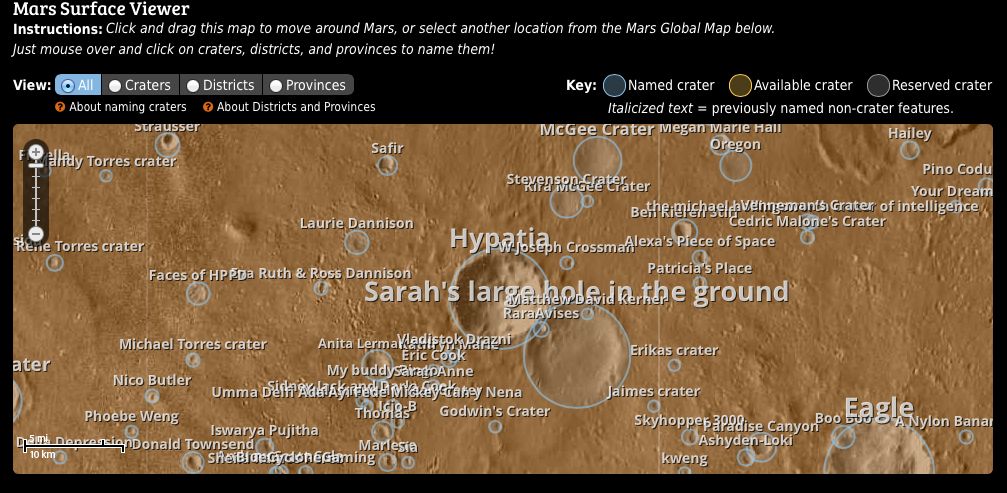
The first people to set foot on Mars may navigate around the Red Planet using a map drawn up with the help of the masses here on Earth.
The Netherlands-based nonprofit Mars One, which aims to land four astronauts on the Red Planet in a one-way mission in 2025, has signed a deal to use a new "people's map of Mars" being developed by the space-funding company Uwingu, officials with both organizations announced today (March 3).
Most of the landforms on Uwingu's map will bear names chosen by the general public, for a small fee. Uwingu announced last week that it's seeking monikers for the 500,000 unnamed craters currently cataloged on Mars, and officials say they hope to solicit appellations for other Red Planet features, such as mountains and canyons, in the future. [Photos: How Mars One Will Colonize the Red Planet]
"We're very enthusiastic about the partnership with Uwingu," Mars One CEO and co-founder Bas Lansdorp said in a statement. "Like Mars One, Uwingu gives everyone around the world the opportunity to participate in space exploration. The name you choose will go down in history, traveling on board our 2018 mission lander and will be used by our future astronauts. What an amazing opportunity!"
Mars One's planned 2018 mission aims to launch a robotic lander and orbiter toward the Red Planet to demonstrate some of the technologies required for human missions. Further unmanned efforts will blast off in 2020 and 2022 to help prepare for the arrival of people, who are slated to touch down in 2025 as the vanguard of a permanent Mars colony.
Mars One plans to pay for most of these activities by staging a global media event around the enitre colonization project, from astronaut selection to the pioneers' life on Mars.
The chief purpose of Uwingu, whose name means "sky" in Swahili, is to raise funds for space exploration, research and education. The Mars crater-naming project could generate more than $10 million if people snap up all 500,000 craters, officials said. (Prices start at $5 for the smallest craters and go up as crater size increases).
Get the Space.com Newsletter
Breaking space news, the latest updates on rocket launches, skywatching events and more!
In exchange for carrying Uwingu's map to Mars on all of its missions, Mars One will receive a portion of the funds generated by the naming project, officials said.

"I'm very excited about this," said Uwingu founder and CEO Alan Stern, a former NASA science chief who also leads the space agency's New Horizons mission to Pluto.
"Our map's actually going to get used on Mars," Stern told Space.com. "Anyone who contributes to it will know that their name — the name that they put down — is going to Mars."
To learn more about the crater-naming project, visit www.uwingu.com.
Follow Mike Wall on Twitter @michaeldwall and Google+. Follow us @Spacedotcom, Facebook or Google+. Originally published on Space.com.
Join our Space Forums to keep talking space on the latest missions, night sky and more! And if you have a news tip, correction or comment, let us know at: community@space.com.

Michael Wall is a Senior Space Writer with Space.com and joined the team in 2010. He primarily covers exoplanets, spaceflight and military space, but has been known to dabble in the space art beat. His book about the search for alien life, "Out There," was published on Nov. 13, 2018. Before becoming a science writer, Michael worked as a herpetologist and wildlife biologist. He has a Ph.D. in evolutionary biology from the University of Sydney, Australia, a bachelor's degree from the University of Arizona, and a graduate certificate in science writing from the University of California, Santa Cruz. To find out what his latest project is, you can follow Michael on Twitter.









